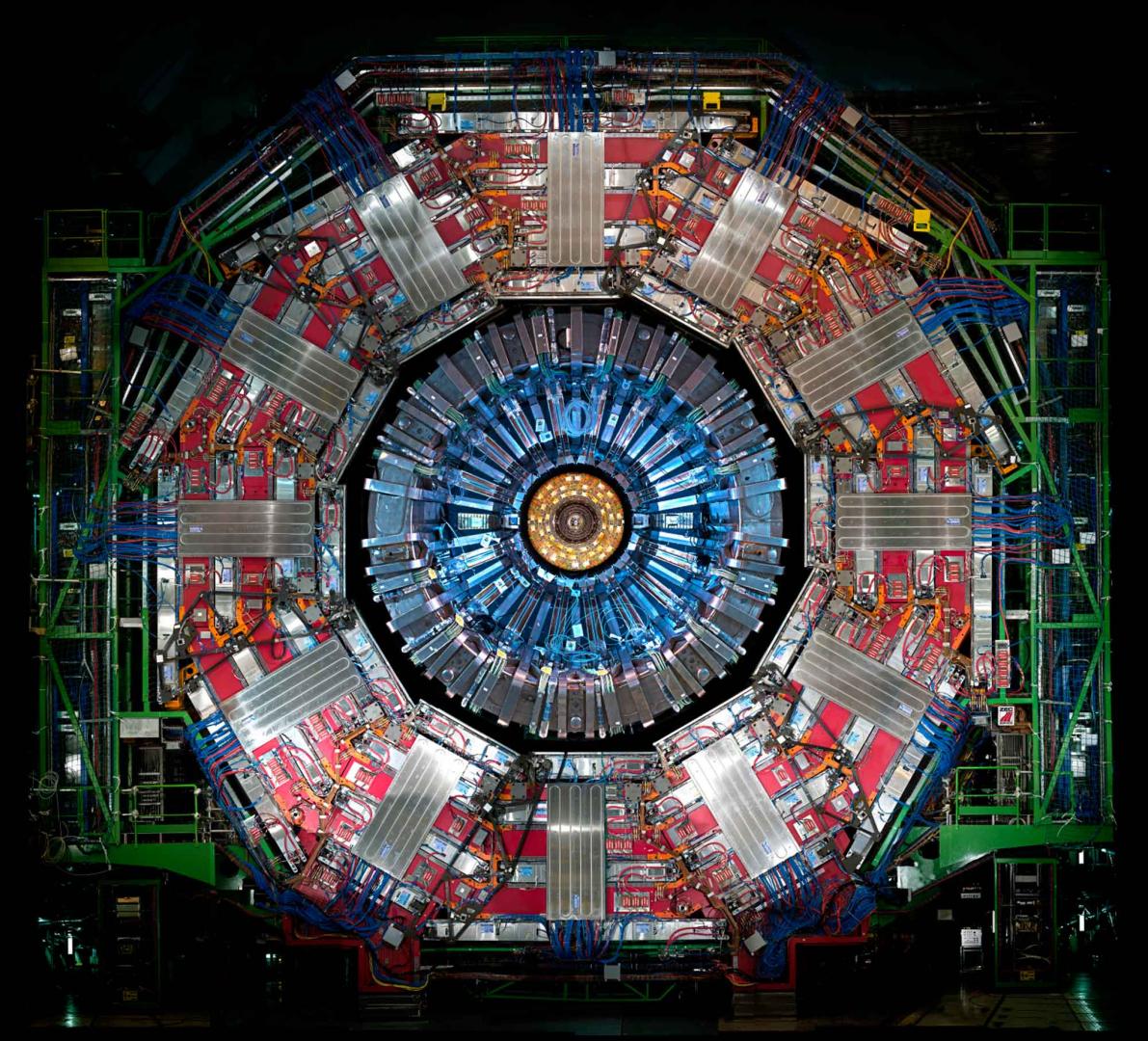At a seminar at CERN this morning, the CMS collaboration presented several measurements of the properties of the Higgs boson. CMS showed strong evidence for the decay of Higgs bosons into fermions, corroborating CMS results shown earlier this year. CMS physicists have now measured the decay of the Higgs to pairs of bottom (b) quarks and pairs of tau leptons, with a combined significance of 4 sigma on the 5-point scale that particle physicists use to measure the certainty of a result. This significance means that the probability of a false positive is estimated to be only about one in 16,000.
The decay to fermions is an important confirmation that the particle discovered in July 2012, with a mass of around 125 GeV, behaves like the Standard Model Higgs boson. The Higgs decays into pairs of lighter particles almost immediately after it is produced in proton collisions in the LHC. In general, particles can decay into various combinations of daughter particles. The Standard Model gives precise predictions for what the decay products are and how often they should occur.
So far, the Higgs boson has been observed decaying into three types of gauge bosons: the Z, the W and the photon. The Standard Model also predicts decays to fermions – namely quarks and leptons, the fundamental particles of matter. The fermionic decays into b quarks and tau leptons are particularly strong: they are the heaviest fermions that a Higgs with a mass of around 125 GeV would decay into and are consequently the most likely fermionic decays to occur.
Using data collected at a collision energy of 7 TeV in 2011 and at 8 TeV in 2012, CMS has now completed refined searches for tau decays with several improvements over previous analyses and found an excess in this channel corresponding to significance of 3.4 sigma. Together with earlier CMS searches for b decays that revealed a 2.1 sigma excess, excesses in the two channels have a combined significance of 4 sigma, indicating strong evidence for the Higgs decaying to fermions.

Protons collide at 8 TeV in the CMS detector. The event shows characteristics expected from the decay of the SM Higgs boson to a pair of tau leptons. One tau decays to neutrinos and a muon (red lines on the right), while the other decays into a charged hadron (blue towers) and a neutrino (Image: CMS. Download)
The evidence supports the conclusion that the Higgs boson discovered at the Large Hadron Collider (LHC) is like the one predicted by the Standard Model, but does not yet allow one to conclude that it is the same particle. Some models predict multiple Higgs bosons, one of which behaves just like a Standard Model Higgs. CMS continues to look for additional Higgs bosons.
The LHC, which is currently in its first long shutdown, will resume operations in 2015 at around twice the energy that it has run at so far. This will provide several times more data for CMS physicists to pore over. The exciting journey has only begun.
Read more: For more detail on this story, see "CMS presents evidence for Higgs decays to fermions" - CMS public website

